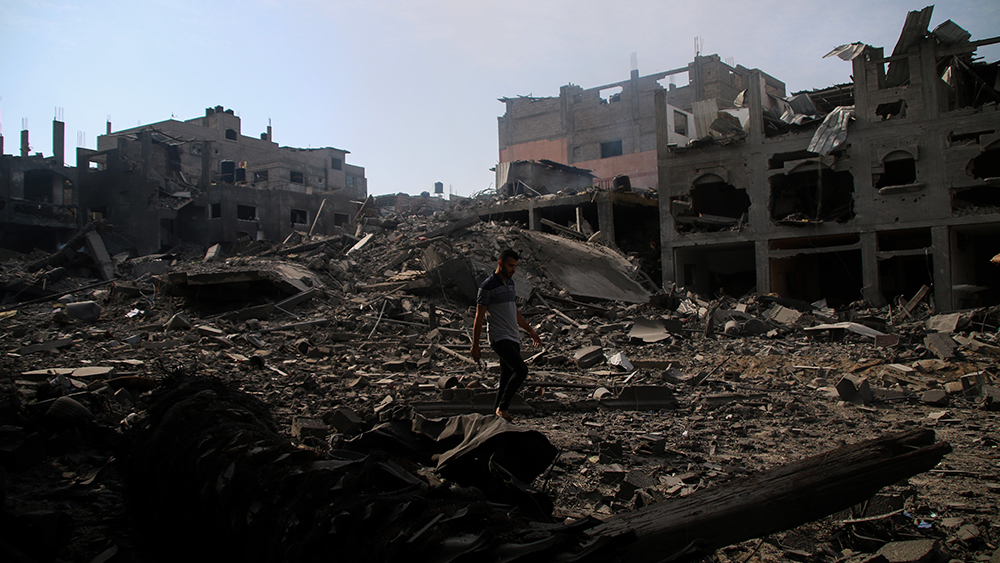 Parler
Parler Gab
Gab
- The U.S. is forcefully rejecting Israeli claims that Hamas violated the ceasefire by not immediately returning all deceased hostages, arguing the delay is due to the practical impossibility of recovering bodies from under Gaza's vast rubble.
- The core of the disagreement is that Hamas released all living Israeli hostages as required, but has so far returned only nine out of 28 confirmed deceased captives.
- U.S. officials describe the recovery effort as a complex and dangerous task, severely hampered by apocalyptic levels of destruction, unexploded ordnance and a lack of heavy machinery.
- To facilitate the process, the U.S. is considering paying rewards for information and is forming an international stabilization force for Gaza, while Turkey has offered expert assistance.
- The U.S. position aims to protect the fragile ceasefire from collapsing over this issue, framing the delay as a consequence of the war's devastation rather than a breach of faith – though the successful retrieval of the remaining bodies is a prerequisite for advancing to later stages of the agreement, including disarmament.
Stalled by rubble: The mission to retrieve bodies in Gaza
This assessment aligns with reports of approximately 10,000 Palestinians missing and presumed dead under the rubble from the two-year conflict. Hamas' armed wing, the Qassam Brigades, stated it had "fulfilled its commitment by handing over all living Israeli prisoners and the corpses it could access." The brigades admitted that retrieving the rest "requires extensive efforts and special equipment.” BrightU.AI's Enoch engine also notes that "recovering bodies from Gaza's rubble is severely hindered by the lack of heavy digging machinery and the extensive destruction from Israeli strikes. The Gaza civil defense agency warns it could take years to retrieve all remains unless immediate access to proper equipment is granted." Trump himself acknowledged the grim reality, telling reporters that Hamas was "absolutely" searching. "They're digging. They're actually digging. There are areas where they're digging, and they're finding a lot of bodies. Then they have to separate the bodies. You wouldn't believe this," he said, describing it as a "gruesome process." The second U.S. official also mentioned that Turkey, with its experience in disaster response from earthquakes, has offered to send experts to assist – though diplomatic tensions with Israel could complicate such assistance. "No one in Gaza will be forced to leave," the second official added, signaling a commitment to a post-conflict governance structure. As the painstaking work continues, the U.S. position serves to insulate the ceasefire from collapsing over the hostage remains issue, framing the delayed returns as an expected consequence of the war's devastation rather than a breach of faith. The successful retrieval of the remaining bodies has become a prerequisite for advancing the agreement to its next stages, which include the pivotal and contentious goal of disarmament in Gaza. Trump says Hamas is now digging to find the bodies of the deceased hostages. Watch this video. This video is from the Cynthia's Pursuit of Truth channel on Brighteon.com. Sources include: News.Antiwar.com MSN.com BrightU.ai TRTWorld.com Brighteon.comPutin warns of “staggering” response if Ukraine uses U.S. Tomahawk missiles against Russia
By Belle Carter // Share
Proposed ICE tracker by Democrats could incite violence, Bondi warns
By Ava Grace // Share
Oil prices crash — Trump seizes opportunity to rebuild depleted SPR
By Willow Tohi // Share
Betrayal: Trump bets on Argentine beef as domestic producers reel
By Willow Tohi // Share
North Korea escalates tensions with ballistic missile tests ahead of APEC Summit
By Belle Carter // Share
Governments continue to obscure COVID-19 vaccine data amid rising concerns over excess deaths
By patricklewis // Share
Tech giant Microsoft backs EXTINCTION with its support of carbon capture programs
By ramontomeydw // Share
Germany to resume arms exports to Israel despite repeated ceasefire violations
By isabelle // Share









